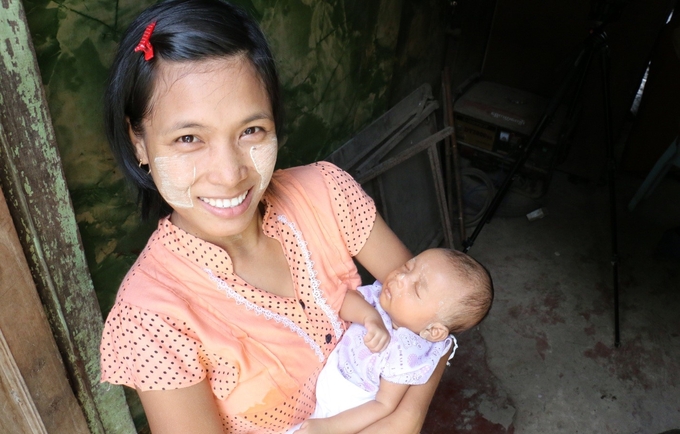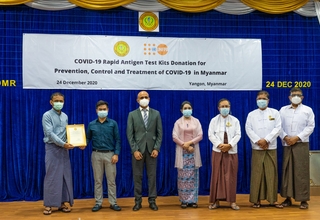The Myanmar maternal mortality ratio – the number of women who die in pregnancy and childbirth – is 2821. This means that there are 282 deaths related to child-bearing for every 100,000 live births. This can be compared to the Southeast Asia average, which is 140. The infant mortality rate is also high at 62 per 1000 live births2.
63 per cent of deliveries take place at home3, where 30 per cent of maternal deaths occur4. The main causes of deaths are post-partum haemorrhage (bleeding), hypertensive disorders of pregnancy (such as eclampsia), consequences of unsafe abortions, and sepsis (a whole-body inflammatory response to infection). Deaths are significantly higher in rural areas, where women have limited access to reproductive health services. Most maternal deaths can be prevented through cost-effective interventions such as the presence of skilled birth attendants during deliveries, emergency obstetric care, and access to birth-spacing commodities and services.
The antenatal care coverage rate is 81 per cent3, while skilled birth attendants are present at 60 per cent of deliveries3. The main constraints are limited access to health services due to poverty, geographical barriers, and a shortage of health personnel, especially midwives. The availability of skilled birth attendants is far below the level recommended by the WHO: an additional 7,000 additional midwifes are needed in Myanmar. An additional concern is the quality of services.
The total fertility rate is 2.515. However, fertility among married women is significantly higher at 4.995. The contraceptive prevalence rate is 52.2 per cent3, and the unmet need for family planning is 16 per cent3. Abortion complications are one of the leading causes of maternal deaths. Ensuring adequate supply of contraceptives and improving quality of birth spacing services are crucial to reducing unintended and unwanted pregnancies and abortions.
UNFPA Activities
Every year, 2800 women in Myanmar die in pregnancy and childbirth. But these tragedies, which leave families broken and children motherless, go unnoticed because they take place outside the public eye, within the confines of the family home. With the aim of increasing the number of safe births in Myanmar, UNFPA supports hands-on training in emergency obstetric and new-born care. Teachers from nursing and midwifery schools are trained by obstetrician-gynaecologists and paediatricians at teaching hospitals. These skills are then filtered down to midwife students, helping to build their capacity to manage complications before, during and after delivery.
UNFPA advocates for the upgrade of national midwifery standards. As a result, requirements in line with ASEAN guidelines have been developed, and plans are underway to upgrade the midwifery education from the current diploma course to bachelor and masters courses. UNFPA also supports the government on policy development and midwifery workforce planning though contributions to the Reproductive Health Five Year Strategic Plan (2014-2018) and the Costed Action Plan to meet commitments for Family Planning 2020. The aim is a more resilient health system, where sufficient numbers of skilled midwives are deployed areas in need.
Through the UNFPA Supplies programme, UNFPA increases the availability and use of medicines and other maternal health products, such as contraceptives, antibiotics, nutritional supplements, and safe delivery equipment, including dugs that keep women from bleeding to death during childbirth. Supplies are distributed to thousands of public and private health facilities throughout Myanmar. UNFPA also supports the development of a logistics system. Good logistics help avoid that clinics run out of critical supplies, and also help avoid overstocking which leads to valuable medicines going out of date.
1 2014 Myanmar Population and Housing Census - Thematic Report on Maternal Mortality
2 2014 Myanmar Population and Housing Census - Thematic Report on Mortality
3 Myanmar Demographic and Health Survey 2015-16
4 Maternal Death Review in Myanmar 2013
5 2014 Myanmar Population and Housing Census - Thematic Report on Fertility and Nuptiality



